 advertisements advertisements
|

|
China launches probe, rover on mission to land on moon's far side
December 7, 2018 — China has launched a robotic lunar lander and wheeled rover in an attempt to achieve the first surface exploration of the far side of the moon.
The Chang'e 4 mission lifted off Friday (Dec. 7) at 1:23 p.m. EST (1823 GMT or 2:23 a.m. Beijing time on Dec. 8) on a Long March 3B rocket from the Xichang Satellite Launch Center in southwest China. If all proceeds to plan, the lander and rover is expected to touch down in Von Kármán crater, within the South Pole-Aitken Basin, after a five-day trip to the moon and then three weeks in lunar orbit, on or about Jan. 3, 2019.
If successful, it will be the first spacecraft to land on the side of the moon that faces away from Earth. Sometimes mistakenly referred to as the "dark side," the far side of the moon receives the same amount of sunlight as the near side.
Chang'e 4 is China's second mission to the surface of the moon. On Dec. 14, 2013, the Chang'e 3 lander and its rover Yutu ("Jade Rabbit") made the first landing on the moon in 37 years, establishing China as only the third nation in history to reach the lunar surface.
Lessons learned
Yutu's planned exploration of the moon's Sea of Rains (Mare Imbrium) ended at 360 feet (110 meters) after a problem rendered the rover immobile. It continued to function as static science platform though, through 2016.
The Chang'e 4 lander and rover were originally backup units to the Chang'e 3 mission. They were repurposed for Chang'e 4 and modified to take account into the lessons learned on the earlier mission.
The Chang'e-4 rover retained the same basic shape and configuration of its predecessor, but gained adaptable and adjustable components to account for the more complex terrain at its far side landing site and to accommodate the science and communication needs of the mission.
To enable far side operations, China launched in May the Queqiao ("Magpie Bridge") communications satellite into a halo orbit around the second Lagrangian (L2) point of the Earth-Moon system. From its position 280,000 miles (455,000 kilometers) from Earth, the satellite will serve as a data relay for the Chang'e 4 lander and rover on the lunar surface.
Far side science
The Chang'e 4 lander and rover have a total of eight instruments, payloads and cameras to support the mission's scientific objectives, including a low-frequency radio-astronomy study and topographic and mineralogical composition studies of the moon's far side surface.
The lander is outfitted with a landing camera, a terrain camera, a low frequency spectrometer and, in partnership with Germany, the Lunar Lander Neutrons and Dosimetry experiment. The rover is equipped with a panoramic camera, a ground-penetrating radar, a visible and near-infrared imaging spectrometer and, in collaboration with Sweden, the Advanced Small Analyzer for Neutrals experiment.
The Chang'e 4 mission also carries a "mini biosphere," designed by 28 Chinese universities, that comprises an aluminum tin holding potato and arabidopsis (a member of the mustard family) seeds, as well as silkworm eggs and a camera.
Siding with history
China's Chang'e 4 launch came just two weeks before the 50th anniversary of another mission with far side history. On Dec. 21, 1968, NASA launched the Apollo 8 crew of Frank Borman, Jim Lovell and Bill Anders, who became the first humans to see the far side from lunar orbit.
The first mission to photograph the far side was the Soviet Union's Luna 3 robotic probe. The spacecraft flew over the sun-lit surface on Oct. 7, 1959, and captured 29 images covering 70 percent of the far side.
If successful, Chang'e 4 will be the 20th mission in history to safely touch down on the moon. |
|
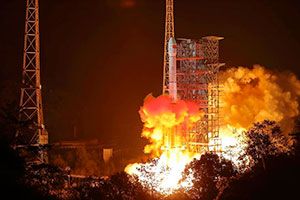
A Long March 3B rocket launches the Chang'e 4 mission from the Xichang Satellite Launch Center in southwest China on Dec. 7, 2018. The Chang'e 4 probe and rover are targeted to land on the moon's far side in early January 2019. (Xinhua)
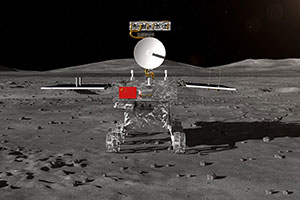
Rendering of the Chang'e 4 rover on the surface of the far side of the moon. (China Aerospace Science and Technology Corporation)
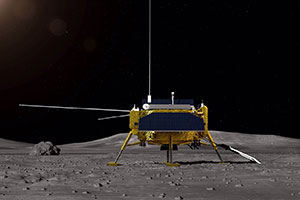
Rendering of the Chang'e 4 lander on the surface of the far side of the moon. (China Aerospace Science and Technology Corporation)
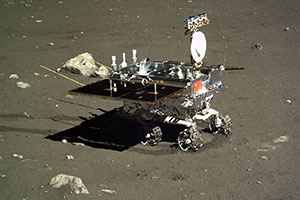
China's Yutu moon rover, photographed on the lunar surface by the Chang'e 3 lander on Dec. 16, 2013. (CASC) |
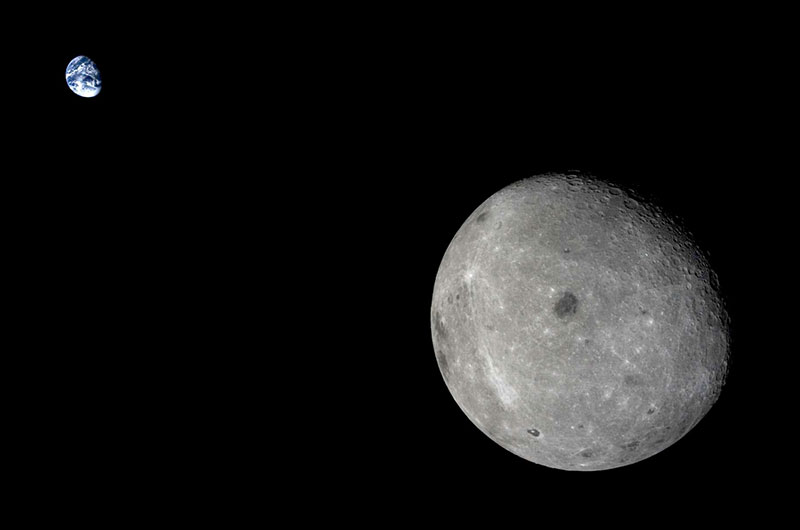
The moon's far side, as photographed by China's Chang'e 5 T1 in 2014, is the target for the Change'e 4 mission. (Chinese Academy of Sciences) |
|

© collectSPACE. All rights reserved.
|
|

|

|
